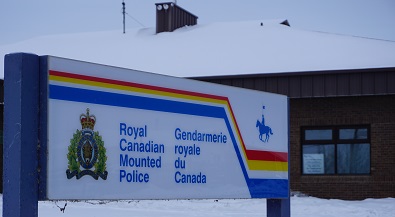The La Loche RCMP detachment is part of the RCMP’s northern district. Photo by Chelsea Laskowski.
The new RCMP superintendent for northern Saskatchewan likes what he sees when it comes to communities taking ownership of policing in the north.
Supt. Larry Wilson took over as the region’s top cop four months ago and spent time at the Prince Albert Empowering Our Communities police board training session hosted by New North and SaskJustice this week.
Wilson says northern communities are unique and all have their challenges, but he also says they can ensure there is positive change by working together with local police boards and community consultation groups.
“Some communities may have issues with stray dogs and that may be potentially the biggest thing in their community, but we (the RCMP) don’t trivialize that. We make sure we pay close attention to those issues” said Wilson.
“We want to make sure our First Nations have an opportunity for input for policing in their area.”
He says attitudes are changing when it comes to the RCMP and the work they do.
“At one point, we were seen as the Redcoats that came in and took children away in some communities. We are cognizant of that and we’re doing everything that we can to leave the impression that we are not a part of the problem; we’re a part of the solution,” Wilson said.
He added that the conference, which ended Thursday, is a great example of how people in those communities have an opportunity to guide the RCMP in the delivery of the service they are providing.
Different communities made presentations on what has worked for them, and in most cases, the RCMP were involved in programs. This is the case for Buffalo Narrows’ Aboriginal Shield school program and with the Muskoday Intervention Circle, which is modeled after the Prince Albert HUB for dealing with at risk individuals.
Wilson’s area as north district commander covers from north of Saskatoon up to the Northwest Territories, and includes 32 RCMP host detachments as well as 19 Community Tripartite Agreements with First Nation communities.
